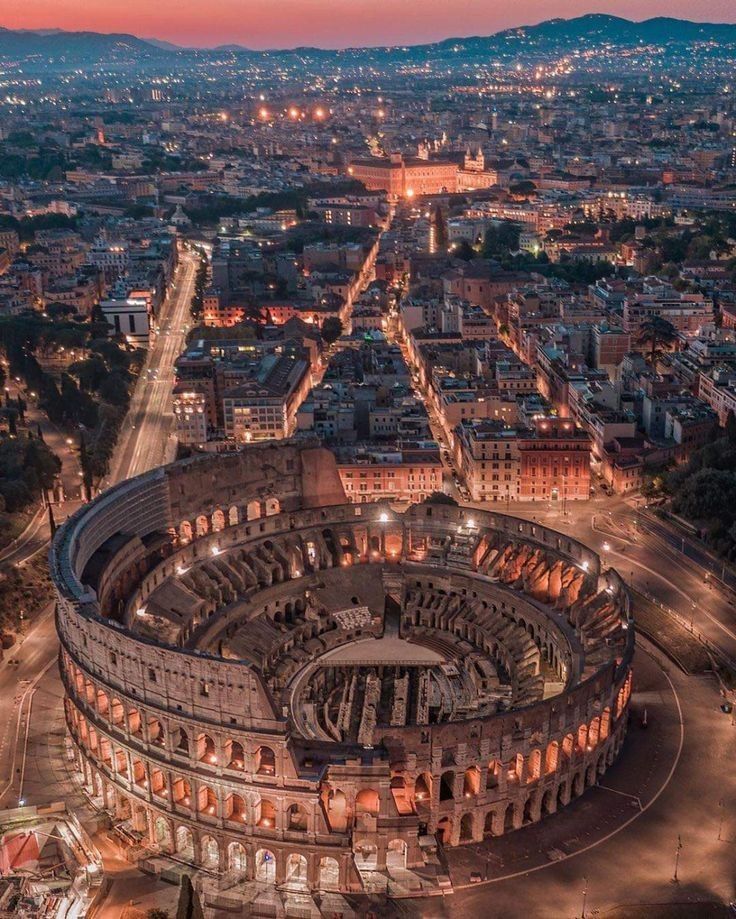
📜 Introduction
The Colosseum, also known as the Flavian Amphitheatre, is one of the greatest architectural and cultural landmarks in human history. Located in the heart of Rome, Italy, this magnificent structure once held gladiator battles, wild animal fights, and dramatic reenactments of sea battles, entertaining audiences of up to 80,000 people.
Today, the Colosseum stands as a powerful symbol of ancient Roman engineering, imperial grandeur, and enduring legacy. In this article, we’ll explore its construction techniques, cultural importance, and lasting influence on architecture and tourism.
🧱 Construction & Architectural Ingenuity
Inside the Colosseum: View of the Hypogeum and seating tiers
🔗 Image Source: Wikimedia Commons
✅ Basic Facts
-
📅 Built: 72–80 AD
-
👑 Commissioned by: Emperor Vespasian and completed by his son Titus
-
🧍♂️ Capacity: ~50,000–80,000 spectators
-
🔧 Materials: Travertine stone, tuff, brick-faced concrete
🧱 Key Engineering Features
-
Arches & Vaults:
Roman engineers used concrete and arches to build a massive structure with incredible durability. The repeated arch pattern allowed for vertical stacking and even weight distribution. -
Velarium (Retractable Roof):
The Colosseum was partially covered by a velarium, a canvas shade system operated by Roman sailors, protecting spectators from sun and rain. -
Hypogeum:
A two-level underground network used for holding gladiators, animals, and stage equipment. Elevators and trap doors created dramatic entrances into the arena. -
Seating System:
Spectators were seated according to social rank — a powerful symbol of Roman social order.
⚔️ Gladiators, Games, and Imperial Propaganda
Roman mosaic showing gladiators in battle
🔗 Image Source: Wikimedia Commons
🏹 Entertainment with a Purpose
The Colosseum hosted a variety of spectacles:
-
Gladiator battles (munera)
-
Animal hunts (venationes)
-
Public executions
-
Naval reenactments (naumachiae) – the arena was flooded for mock sea battles
-
Theatrical performances of mythological tales
These events were free for the public, funded by emperors and wealthy elites to gain popularity and display power. The games were a form of “bread and circuses” — a way to distract and control the masses.
📚 Cultural and Religious Transformation
🏛️ From Pagan Arena to Christian Symbol
-
After the decline of the Roman Empire, the Colosseum was abandoned and repurposed.
-
In the Middle Ages, it was used as a fortress and later a stone quarry.
-
By the 18th century, Popes declared it a sacred Christian site due to the belief that early Christians were martyred there (though historical accuracy is debated).
Today, the Pope leads an annual Good Friday procession at the Colosseum, symbolizing its transformation from a place of violence to one of reflection and peace.
🧭 Visiting the Colosseum Today
The Colosseum is a UNESCO World Heritage Site and attracts over 7 million visitors annually, making it one of the most popular landmarks in the world.
🗺️ What to Explore
-
🔸 Arena Floor: Stand where gladiators once fought.
-
🔸 Underground Hypogeum: See the tunnels, cages, and elevators.
-
🔸 Upper Levels: View the whole city of Rome.
-
🔸 Nearby Sites: Roman Forum and Palatine Hill are just next door.
🎟️ Tips for Tourists
-
✅ Book tickets online to avoid long queues
-
✅ Take a guided or audio tour for rich historical context
-
✅ Visit early morning or late afternoon for fewer crowds and better lighting
🛡️ Preservation & Restoration Efforts
Despite enduring earthquakes, looting, and pollution, the Colosseum still stands tall thanks to continuous conservation efforts.
-
Ongoing restoration projects have repaired arches, cleaned facades, and reopened previously closed areas.
-
In 2021, Italy unveiled plans for a reconstructed arena floor to host cultural events while respecting historical integrity.
-
Efforts are being made to ensure the site is accessible and sustainable for future generations.
📈 The Colosseum’s Impact on Architecture and Pop Culture
🏗️ Architectural Influence
The Colosseum inspired the design of modern sports arenas and stadiums. Its tiered seating, oval shape, and crowd-control systems are still used in stadiums today.
Examples:
-
The Los Angeles Memorial Coliseum
-
The Colisée de Québec in Canada
-
The Coliseum Theatre in London
🎬 In Movies & Media
The Colosseum has been featured in films like:
-
Gladiator (2000)
-
Jumper (2008)
-
Roman Holiday (1953)
It’s also referenced in literature, video games, and pop culture, enhancing its global recognition.
🏁 Conclusion
The Colosseum of Rome is more than just an ancient ruin — it's a living testament to the ingenuity, ambition, and complexity of Roman civilization. From its awe-inspiring construction and engineering feats to its brutal history and modern cultural symbolism, the Colosseum captures the imagination of millions.
Whether you’re a history lover, architecture enthusiast, or world traveler, a visit to the Colosseum offers a powerful glimpse into the heart of an empire that shaped the world.
🔍 SEO Keywords (Integrated):
-
Colosseum Italy
-
Roman Colosseum history
-
Gladiator games Colosseum
-
Colosseum architecture
-
Ancient Rome amphitheater
-
Visiting the Colosseum Rome
-
Colosseum facts for tourists
-
UNESCO sites in Italy
-
Engineering of Roman Colosseum

You must be logged in to post a comment.